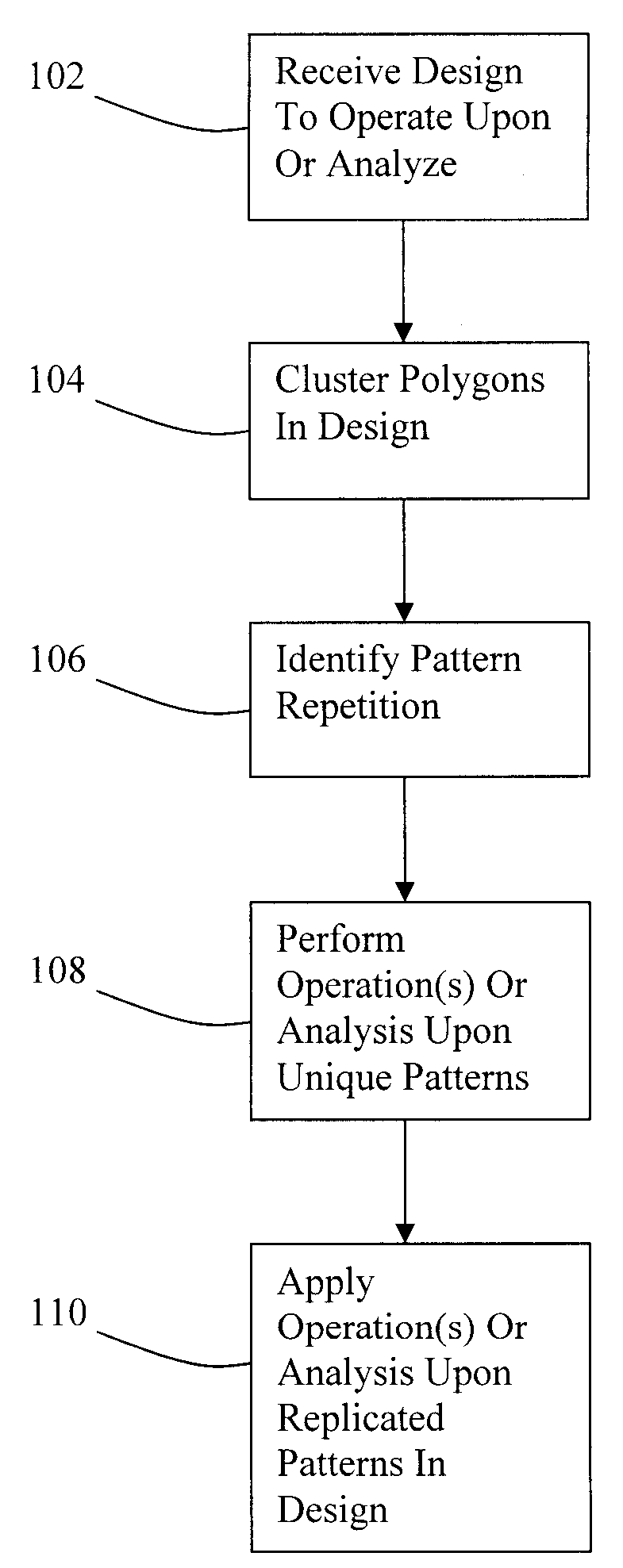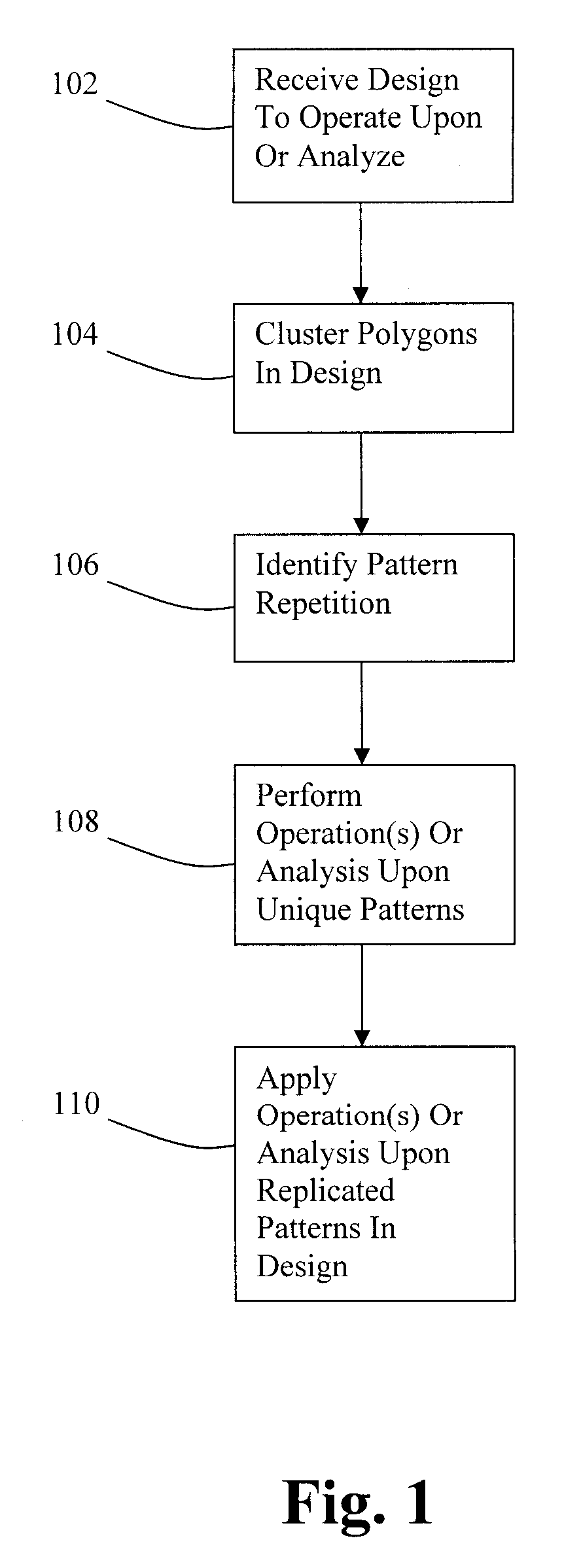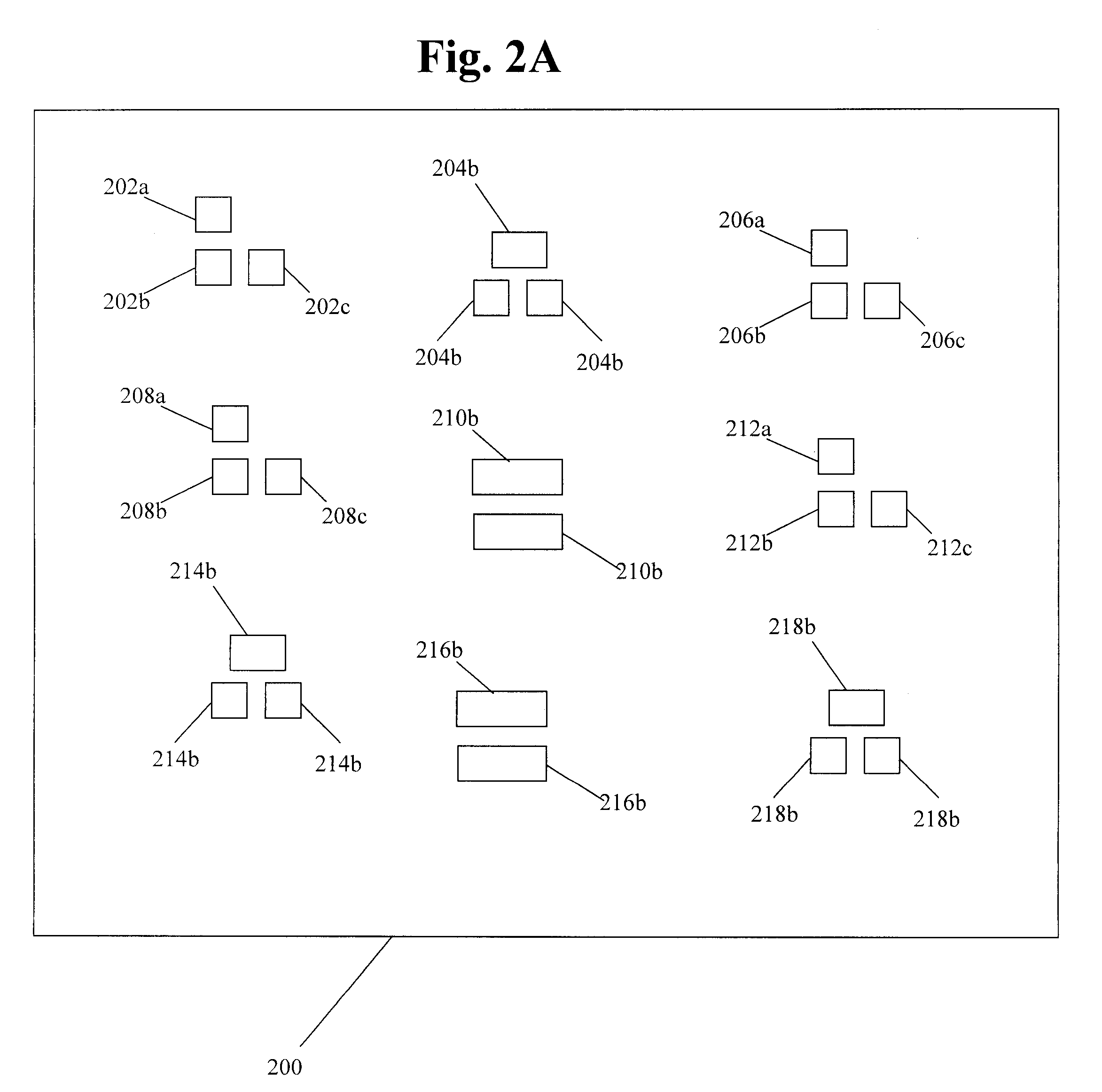Method and mechanism for extraction and recognition of polygons in an IC design
a polygon and ic design technology, applied in the field of electronic design automation tools, can solve the problems of requiring a large amount of system resources, requiring a long period of time, and existing methods for organizing ic data become ever more inadequate to allow efficient access and analysis of data, so as to reduce the amount of data required, the complexity and size of layout data increase dramatically.
- Summary
- Abstract
- Description
- Claims
- Application Information
AI Technical Summary
Benefits of technology
Problems solved by technology
Method used
Image
Examples
Embodiment Construction
[0014]Embodiments of the present invention provide an improved approach for organizing, analyzing, and operating upon polygon data which significantly reduces the amount of data required for processing while keeping elements non-interfacing with each other. Embodiments of the invention provide an improved approach to layout data restructuring and hierarchy creation for better and more efficient processing. An automated method to form clusters from polygons and a method to code a set of polygons in a given layout in terms of tree structure is disclosed. The automated method for forming clusters from polygons provides selection subsets of shapes which do not affect other shapes and also provides coding for a set of polygons in a given layout in terms of tree structure to allow recognition of repeated patterns in a layout data. The result includes sets of shapes (“clusters”) selected from layout that are repeated a number of times but not affecting each other during the future processi...
PUM
 Login to View More
Login to View More Abstract
Description
Claims
Application Information
 Login to View More
Login to View More - R&D
- Intellectual Property
- Life Sciences
- Materials
- Tech Scout
- Unparalleled Data Quality
- Higher Quality Content
- 60% Fewer Hallucinations
Browse by: Latest US Patents, China's latest patents, Technical Efficacy Thesaurus, Application Domain, Technology Topic, Popular Technical Reports.
© 2025 PatSnap. All rights reserved.Legal|Privacy policy|Modern Slavery Act Transparency Statement|Sitemap|About US| Contact US: help@patsnap.com



